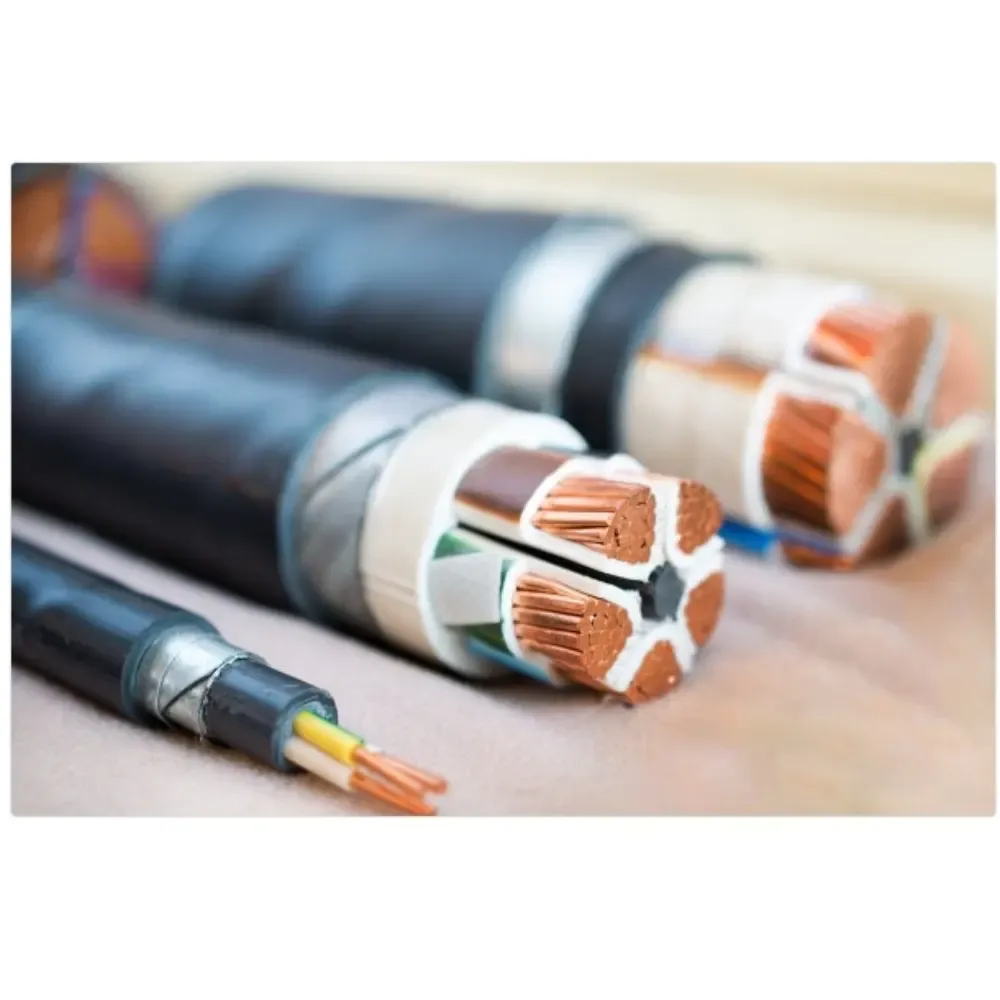Time: 2025-03-29 12:09:29 Source: Henan Province Jianyun Cable Co., Ltd.

Keywords: Low Smoke Zero Halogen (LSZH), Thermoplastic Polyurethane (TPU), Flame Retardant, Aluminum Hypophosphite, Ammonium Polyphosphate, Smoke Suppression, Cable Sheath, Polymer Modification
In the modern era of electrification, the safety of cable materials has become a critical concern. Traditional cable sheath materials often contain halogen-based flame retardants, which release toxic gases and dense smoke during combustion, posing significant health and environmental hazards.
The research paper titled "Modification of Low-Smoke Halogen-Free Flame-Retardant Thermoplastic Polyurethane Elastomer Sheath Material" presents a significant advancement in polymer technology by developing an eco-friendly, low-smoke, halogen-free flame-retardant thermoplastic polyurethane (TPU) composite. This article aims to break down the complex scientific content of the paper into a reader-friendly analysis, supported by tables, comments, and technical insight.
Thermoplastic Polyurethane (TPU) is widely used in wire and cable industries due to its superior flexibility, mechanical strength, and processing properties. However, TPU has one critical flaw — its high flammability and smoke emission. To address this, the researchers introduced a synergistic flame-retardant system comprising:
Aluminum Hypophosphite (AHP)
Ammonium Polyphosphate (APP)
Melamine Cyanurate (MCA)
This combination not only improves flame resistance but also significantly reduces smoke release and toxic gas emissions without relying on harmful halogen compounds.
The research team prepared multiple TPU composite samples with varying flame-retardant ratios. The baseline TPU was modified by adding different proportions of AHP, APP, and MCA. A twin-screw extrusion process was used for uniform dispersion.
Table 1: Composition of TPU Flame Retardant Formulations
| Sample No. | TPU (phr) | AHP (phr) | APP (phr) | MCA (phr) |
|---|---|---|---|---|
| S0 (Control) | 100 | 0 | 0 | 0 |
| S1 | 100 | 25 | 10 | 5 |
| S2 | 100 | 30 | 10 | 5 |
| S3 | 100 | 35 | 10 | 5 |
| S4 | 100 | 40 | 10 | 5 |
(phr = parts per hundred rubber)
The Limited Oxygen Index (LOI) and UL-94 vertical burning test were used to evaluate flame retardancy. Results showed a significant improvement:
Table 2: Flame Retardant Performance
| Sample No. | LOI (%) | UL-94 Rating |
|---|---|---|
| S0 | 20.5 | No rating |
| S1 | 27.5 | V-2 |
| S2 | 28.7 | V-1 |
| S3 | 30.1 | V-0 |
| S4 | 30.5 | V-0 |
Comments:
The sample S3 and S4 achieved the highest rating of V-0, indicating excellent flame resistance suitable for industrial applications.
The research also measured smoke production using the smoke density test. The modified TPU showed reduced peak smoke production rates compared to pure TPU.
Table 3: Smoke Density Index
| Sample No. | Maximum Smoke Density (Ds max) |
|---|---|
| S0 | 348 |
| S3 | 228 |
| S4 | 215 |
Comments:
The smoke density decreased by over 35% in the modified samples, significantly improving visibility and reducing asphyxiation risk during fires.
Thermogravimetric Analysis (TGA) showed that flame-retardant TPU composites exhibited:
Higher char residue at 700°C
Improved thermal stability
This indicates that the flame retardant additives promote the formation of a protective carbonaceous layer, acting as a thermal barrier during combustion.
A common drawback of adding flame retardants is the deterioration of mechanical properties. However, this research achieved a good balance:
Table 4: Mechanical Properties
| Sample No. | Tensile Strength (MPa) | Elongation at Break (%) |
|---|---|---|
| S0 | 34.2 | 430 |
| S3 | 29.7 | 380 |
| S4 | 28.4 | 375 |
Comments:
Although there is a moderate reduction in tensile strength and elongation, the composites retain acceptable mechanical performance for cable applications.
The synergistic flame-retardant mechanism is as follows:
APP and AHP Decomposition:
They release phosphoric acid and phosphorous compounds during burning, promoting char formation.
MCA Contribution:
Melamine Cyanurate releases non-flammable gases (e.g., N₂) that dilute oxygen and flammable volatiles.
Protective Char Layer:
The combined effect forms a stable char barrier, inhibiting heat transfer, fuel supply, and oxygen access.
This study offers a practical solution to the industry's demand for Low Smoke Zero Halogen (LSZH) cable sheath materials. The TPU composite prepared:
It can be widely applied in:
Power cables
Communication cables
Railway, aerospace, and large public building wiring
This research stands out in the polymer flame-retardant field because:
Balanced Performance:
Many flame-retardant additives compromise mechanical properties; this formula maintains an excellent balance.
Environmental Focus:
The switch to halogen-free materials reflects increasing regulatory and market demands for safer, greener materials.
Scalability:
The use of standard twin-screw extrusion technology ensures scalability for mass production.
The study demonstrates a successful, eco-conscious approach to enhancing flame retardancy and smoke suppression in TPU sheathing materials without compromising mechanical integrity. Its practical value is significant for industries where safety, sustainability, and performance are crucial.
Original Paper: Modification of Low-Smoke Halogen-Free Flame-Retardant Thermoplastic Polyurethane Elastomer Sheath Material
National Standard GB/T 2408-2008 (Vertical Burning Test)
GB/T 8627-2007 (Smoke Density Measurement)